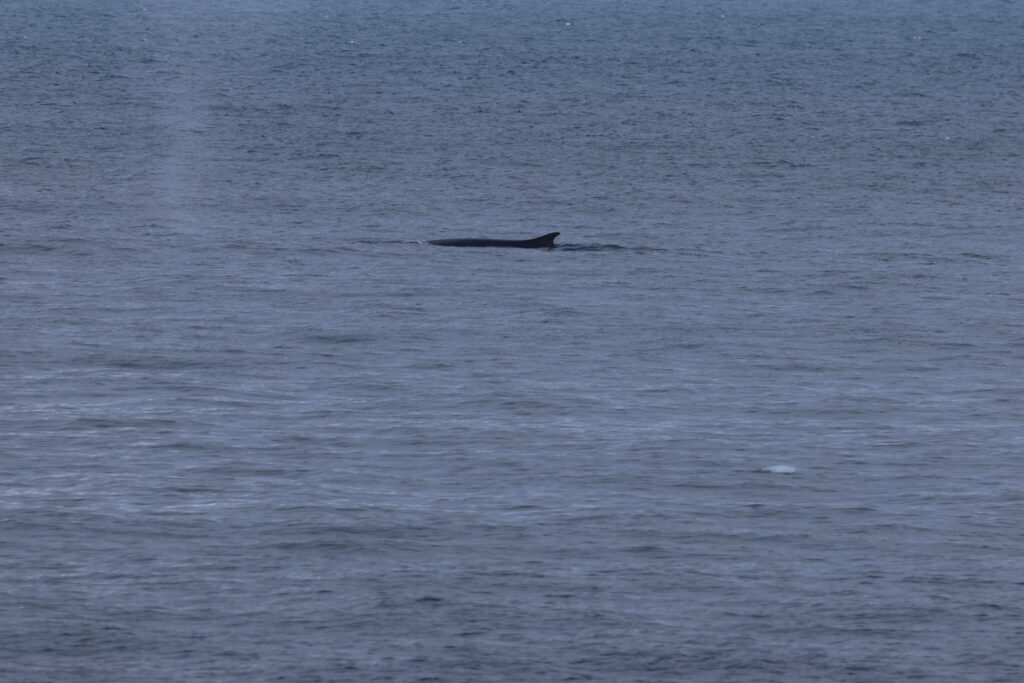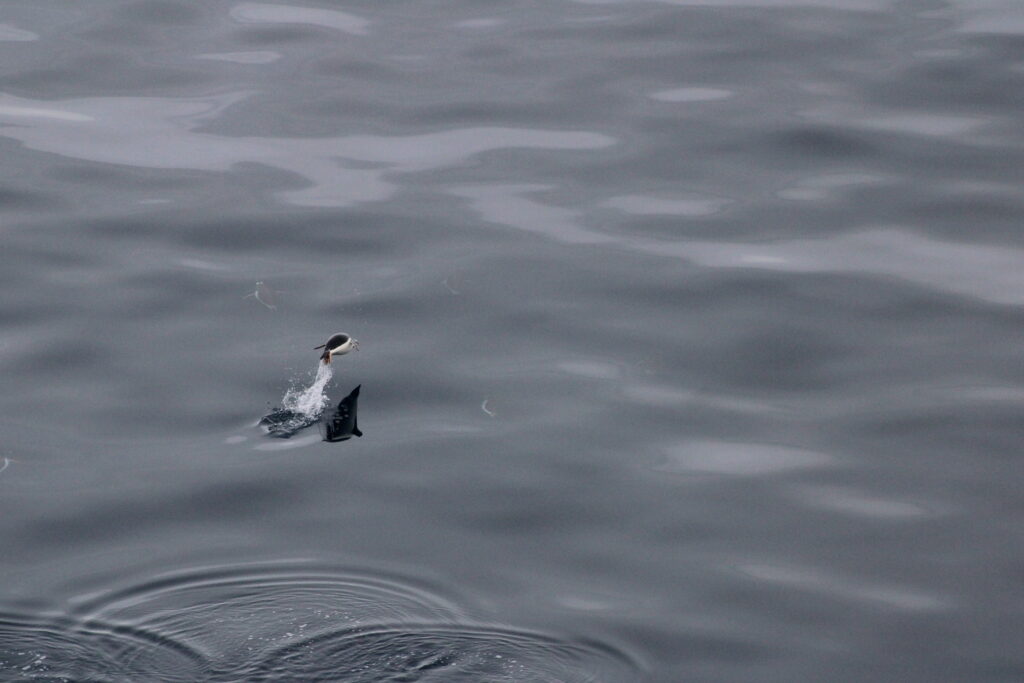
2 November, 2025 In the morning, we gave our first scientist presentations to guests, kindly translated to French by Gwen, where we introduced ourselves and our projects. Our ship transited to Half Moon Island, home to one of the largest chinstrap penguin colonies in the region with to regular sightings of skuas, snowy sheathbills, and Antarctic terns. The island is located between Greenwich Island and Livingston Island of the South Shetland Island chain. We picked up our field gear (parkas and boots) kindly provided by Ponant and did all required biosecurity training and preparation for field expeditions before fitting in a transect survey. We saw more of our favorite cape petrels, kelp gulls, and some newcomers to us the snow petrels, juvenile northern giant petrels, and a skua. This was also the first time we saw small floating chunks of ice passing our vessel. Weather conditions were generally fair with partly cloudy skies, mild wind speeds and swell, and temperatures in the low negatives (°C).
Shortly after concluding our transect survey during transit to Half Moon Island an intercom announcement around midday alerted us to several humpback blows near the ship. We quickly made our way to the 5th deck promenade deck with cameras and reticle binoculars to catch them off the aft of the ship. There were 7 humpbacks, comprised of two different groups of whales, quickly moving perpendicularly to the ship. They were not diving so there were no displays of flukes to capture for identification. We captured pictures of dorsal fins, group size, and distance from the vessel.
A couple of hours later, while guests were out exploring the penguin colony, Renee went out on the first zodiac boat trip in the afternoon for several hours. She was able to deploy the hydrophone for three recordings which captured two Weddell seals (and possibly a Leopard seal!) vocalizations. A group of gentoo penguins swam toward the zodiac while they were collecting data but quickly turned the other direction once they got close to the boat. She also saw a few groups of imperial shags and blue petrels. Another group of about 20 Gentoo penguins were seen approaching the Charcot before swimming the opposite direction.
Later that evening while transiting to the next anchoring location for the evening at Dee Island, an ice-free island between Greenwich Island and Aitcho Island, the science officer informed us that two whales were spotted from the bridge. We identified them as fin whales despite their shorter than expected blows. They were staying in one place for quite a while and often floating at the surface for extended periods. It is believed that their stout blows were due to brief foraging dive activity rather than deep diving or traveling exhalations.
MariAnna spent the evening as an invited guest dining and engaging with cruise passengers. They were very interested in learning about ocean systems and how they are all interconnected. In particular, they wanted to discuss the ocean as a carbon sink and the various processes that support that and how whales are a part of, and impacted by, that. As part of being an onboard scientist with Ponant expeditions, the opportunity to have discussions with interested guests from around the world is a welcomed experience for both guests and scientists alike.


